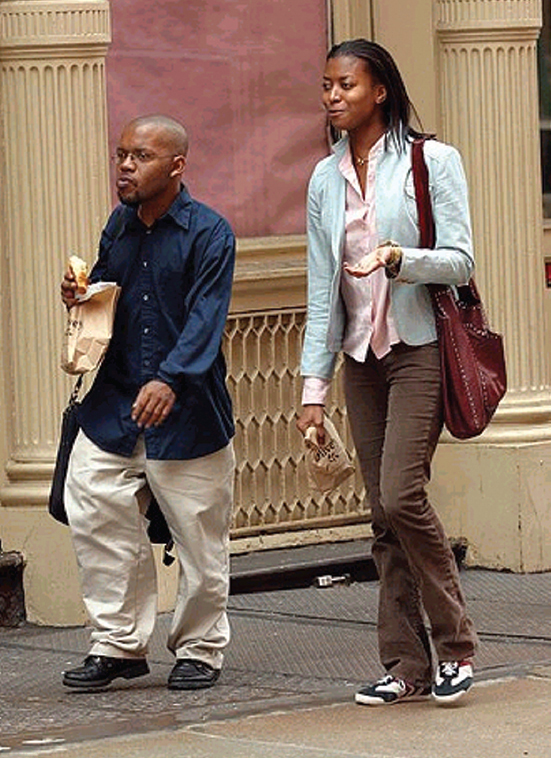Focusing on the Present
Printed Page 395
In the 1840s, when the telegraph first enabled news to crisscross America instantly, modern journalism was born. To seize advantage of the new technology’s immediacy, newspaper editors began to encourage reporters to focus on the present in their stories. Over time, editors asked journalists to accent the new and the now, while downplaying the historical developments that led up to a current event (and took up more space in the report). “Get a good story—and get it first” became the goal for reporters.
Treating Events as Momentary Sensations
As a result of this focus on the present, the press began treating (and still treats) many hot-button topics (crime, immigration, abortion) as momentary sensations rather than the complex, long-term issues and experiences that they really are. An event related to one of these topics erupts—for instance, an abortion provider is murdered—and news media crank out stories about it, but without providing any historical context or nuanced analysis. Citizens get fired up by the sensational coverage, forming and exchanging heated opinions. Then news media move on to other attention-grabbing events, and people forget about the latest one, even though it remains an important and complex issue. Through this process, news decisions and choices help set the agenda about what gets regarded or constructed as important and significant on any given day—even though what passes for news on some days is neither particularly important nor significant but merely dramatic or sensational.

Getting a Good Story
In addition to causing journalists to treat complex issues as momentary sensations, the profession’s focus on the present puts immense pressure on reporters to tell compelling stories for readers and viewers. But some media critics have raised the question of whether “getting a good story” should be the end result of reporters’ responsibilities.
Consider Janet Cooke, a former Washington Post reporter, who in the 1980s was fired for fabricating an investigative report for which she initially won a Pulitzer Prize. (It was later revoked.) To develop her fake report, Cooke had created a cast of characters, including a woman who supposedly contributed to the heroin addiction of her eight-year-old son.
When the hoax was exposed, Chicago columnist Mike Royko criticized conventional journalism for allowing the imperative of getting a good story to trump the importance of being a responsible citizen: “There’s something more important than a story here. This eight-year-old kid is being murdered. The editors should have said forget the story, find the kid. . . . People in any other profession would have gone right to the police.”7 Had editors at the Post demanded such help, Cooke’s hoax would not have gone as far as it did. Fabricated stories have continued to turn up occasionally, including the cases of Jayson Blair of the New York Times, Stephen Glass of the New Republic, and Jonah Lehrer who was fired from the New Yorker for falsely attributing quotes to Bob Dylan.
Getting a Story First
The imperative to not only get a good story but also get it first has, for some journalists, turned the profession into a highly competitive game. It has become routine for local TV stations and newspapers to brag about how they beat competitors to a story. During major elections, for example, news outlets that project winners in particular races have often hyped their projections when they are able to forecast results before the competition does.
In some ways, the news cycle, enhanced by cable and the Internet, has intensified the race to get the story first. With a fragmented audience and more media competing for news, mainstream news outlets can feel pressured to resort to exclusive, often sensational, stories to lure readers and viewers away from rivals. Yet the earliest reports are not necessarily better, more accurate, or as complete as stories written later that provide more context and perspective.

On occasion, the drive to get exclusive stories—and to feed the ever-hungry “news hole” created by today’s world of 24/7 news—also triggers pack journalism: reporters desperate for material stake out someone’s house, chase celebrities in herds or packs, or follow a story with such unoriginal single-mindedness that the entire profession seems to lose its bearings. For example, in spring 2008, after Barack Obama clinched the Democratic presidential nomination, his wife Michelle gave him an affectionate “fist bump” that was caught on camera. Though many people recognized it as a congratulatory gesture signifying a task well done, some cable news reports sought to turn the fist bump into big, scary news. For example, one pundit, E. D. Hill of Fox News, speculated: “A fist bump? A pound? A terrorist fist jab? The gesture everyone seems to interpret differently?” Treating this particularly insignificant event as a meaningful spectacle, cable news analysts and reporters kept this story alive for weeks simply because other unimaginative reporters and news channels deemed the story newsworthy.